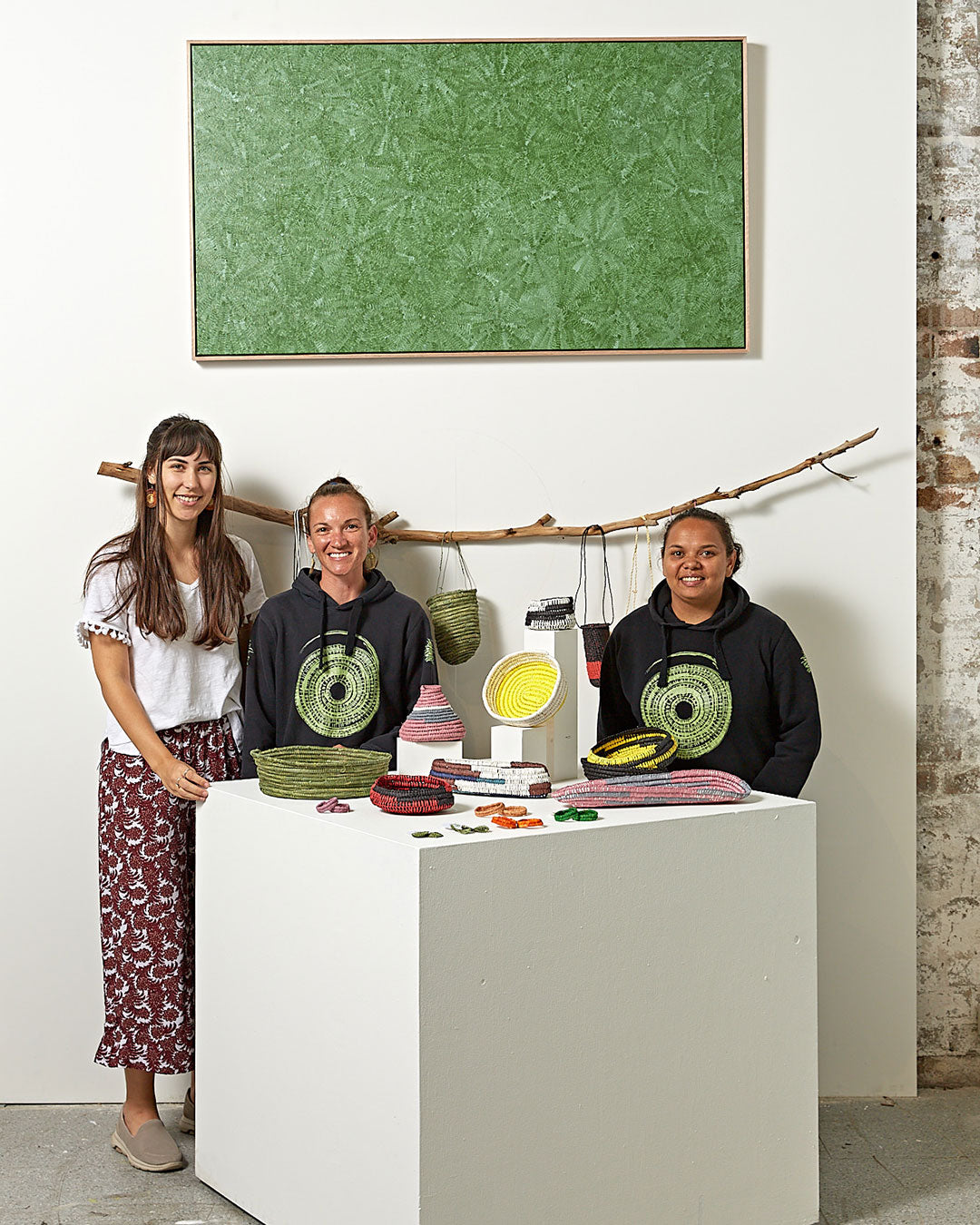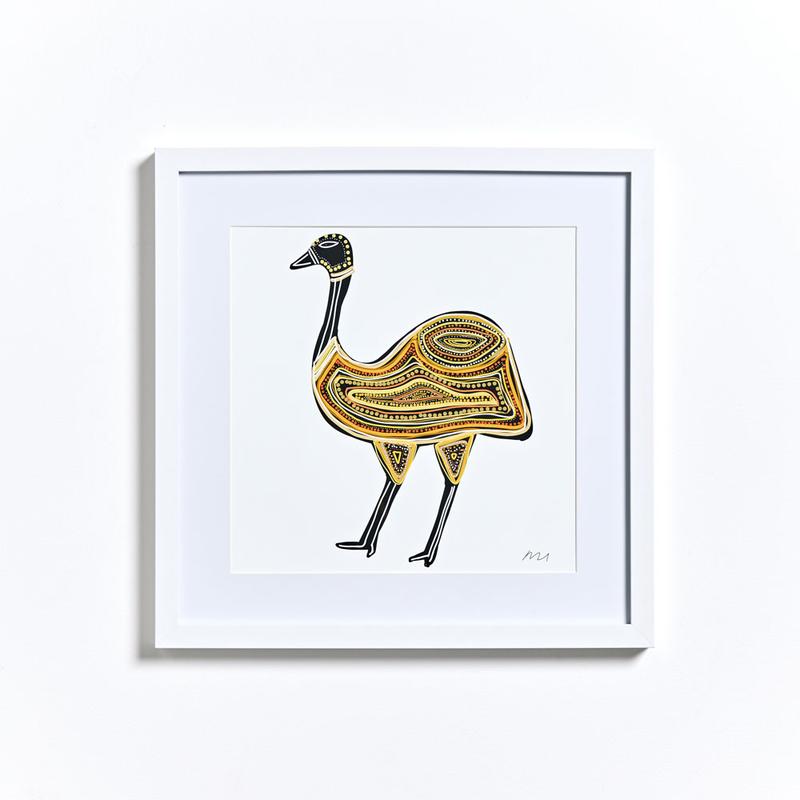Live
How to buy First Nations art
How to buy First Nations art
The NAIDOC 2021 theme is Heal Country, Heal Our Nation, which calls for stronger measures to recognise, protect, and maintain all aspects of Aboriginal and Torres Strait Islander cultures and heritage.
An important element of this, is ensuing that Aboriginal and Torres Strait Islander artists’ rights are protected when purchasing art.
To commemorate NAIDOC Week we want to amplify First Nations passion and cultures through art. To achieve this, we aim to empower buyers with the tools to purchase Aboriginal and Torres Strait Islander art ethically through a five question process.
Read below to uncover the five questions you need to ask before you buy, and why.

1. Is the seller a member of the Indigenous Art code?
The purpose of the Indigenous Art Code is to establish standards for dealings between dealers and artists to ensure three key principles are upheld:
- Fair and ethical trade in artwork
- Transparency in the process of promotion and sale of artwork
- That disputes arising under the code are dealt with efficiently and fairly.
It was established in 2009 by the National Association of the Visual Arts (NAVA) and then by the Australian Council for the Arts. To be a member of the Code shows your commitment to ethical trading of First Nations Art to ensure that profits are going back to community and direct to the artists.
We are members of the code, as are all art centres that we work with. By working exclusively with art centres who are fellow members, we can provide full transparency across the sales process.
2. What do I do if I want to buy independent First Nations art?
For this one, we consulted Koskela's First Nations Impact Specialist, Zoe who has personally expanded Koskela's art buying from exclusively art centres, to include independent artists as well.


When trying to source independent First Nations art, what are some key things you should look for?
These days everything is online, it is very easy to do a quick Google search of an art centre, gallery or artist. Most, if not all, artists and art centres we work with have great websites where you can purchase artworks online or be directed to their stockists.
How do you know the artwork is authentic without an art centre certification?
It is best to do your due diligence before purchasing an artwork. It is not mandatory for First Nations art to come with a certificate of authenticity however most established art centres and artists that are part of the Indigenous Art code will. Artists also sign their works and so many have unique signatures that you can recognise when doing your research.
How do you start the research journey? And are there any go-to Instagram pages or websites you always go back to?
Instagram is definitely the place to be! The platform has become an excellent tool for First Nations artists where they are able to reach new audiences and showcase their practice.
To start your journey I recommend following @tradingblak, they have a great highlights reel on their page linking a whole range of amazing First Nations artists.
When we work with independent First Nations artists, we follow the same protocol as the art code and always use an agreement from Arts Law. Additionally, it’s important to do due diligence, and develop relationships with the artists to really understand them and their practice.
3. How can I buy First Nations art for my budget?
At Koskela, we source a range of artworks based on style, size, price point and mediums to try and ensure there’s something for everyone.
However, when doing your own research, there are two key factors which influence an artworks price:
- The size of the work
- The seniority of the artist.
The size of the work is quite intuitive to understand where the value lies, bigger works often take more time and require more materials, which is reflected in their price. However, there are a few styling hacks you can adopt to try and achieve a similar visual effect on a tighter budget.
A Koskela favourite of this is to cluster small works together, you can have fun playing with positions and colour choices.
Both art centres and independent artists have different rates based on the artist's experience and standing in the community.
Emerging artists
For First Nations artists it is important to note that ‘emerging’ should not be conflated with youth. Instead, it relates to the level of experience of the artist.
These artists often learn from the senior artists in the community and go on to become extremely reputable. Generally, their works are more affordable than their senior counterparts.
Some examples of art from emerging First Nations artists:
Senior artists
First Nations senior artists are revered in the community and masters of their craft. The Koskela Gallery as well as the store is host to many incredible pieces by notable and famous Aboriginal and Torres Strait Islander artists from across Australia. Their experience and reputation are reflected in the price.
As a snapshot, here are some senior First Nations artists that we have worked with.
Rammey Ramsey from Warmun Arts Ngaboo-lang Exhibition by father-daughter duo, Rammey Ramsey and Kathy Ramsay


Mavis Ganambarr from Elcho Island Arts
Doreen Chapman from Spinifex Hill Arts Doreen Chapmans solo exhibition Looking, Looking, Painting

4. Where can I find Aboriginal art galleries?
In 2020, we relaunched the Koskela Gallery, dedicating the space to works from Aboriginal and Torres Strait Islander artists and community art centres. As part of our social impact work and commitment to Reconciliation, we were proud to take the next step and use the gallery space as a platform to recognise, respect and highlight the diversity of Aboriginal and Torres Strait Islander peoples and cultures.
However, if you want to broaden your horizons a little further, check out the Indigenous Art Code website, they have a comprehensive map of all art centres and galleries which are members of the code, so you can trust that your money will be going directly back to the artist and community.

5. How do you want to style the art in your home?
To tackle this question, we consulted our talented Home Consult Specialist, Marnee to offer some tips and tricks on how to style.
"Often, a great way to connect your gorgeous new art to your space is to pull colours from the artwork into your room through accessories such as cushions, vases and ornaments.
Many of the First Nations artists we represent use ochres and pigments from Country. These colours are usually warm reds, browns and yellows and I find our leather throw cushions, earthy ceramics, such as Jam factory and the stunning Pan Pottery vases work really well. Add one of our cosy recycled wool blankets or a chestnut leather bean bag for winter styling heaven.
Other artists such as Doreen Chapman use wonderfully bright pastels that will lift your space and work really well with white and light timbers."
Whichever artwork you choose, the best styling advice of all, if it makes your heart sing, your home will be a happier place with it gracing your walls."


Do you have any questions? Get in touch today, and we will connect you with the right person in our team.
Koskela is proud to be the first furniture and homewares company in Australia to be a Certified B Corporation®.











